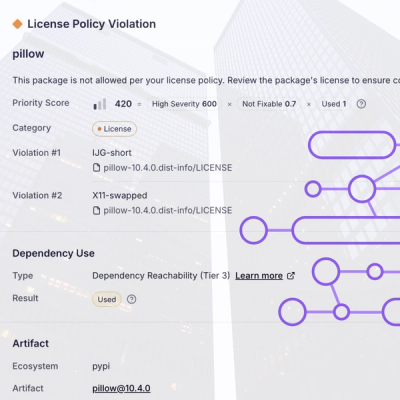
Research
/Security News
Critical Vulnerability in NestJS Devtools: Localhost RCE via Sandbox Escape
A flawed sandbox in @nestjs/devtools-integration lets attackers run code on your machine via CSRF, leading to full Remote Code Execution (RCE).
Slave is a tiny utility to allow you to create long-running slave processes for your node process and use these functions as promises. Create modules that run in separate processes without anyone even knowing!
Wrap your function in a slave. The function must either:
Now, create a separate my-module/slave.js file:
var slave = require('slave/slave');
var fn = require('./index.js'); // my main module
slave(fn); // it's wrapped!
Now you can create a my-module/master.js file,
which runs slave.js:
var master = require('slave/master');
module.exports = master(require.resolve('./slave.js'))
Now users have two ways to use this module. Directly:
var fn = require('my-module');
fn(1, 2).then(function (val) {
});
Using child processes:
var fn = require('my-module/master');
fn(1, 2).then(function (val) {
});
Create a function from a slavepath,
which exports a slave.slave() function.
Options are:
forks=0 - number of child processes to initiate immediatelyfn will always return a promise,
even if the wrapped function is synchronous.
Create a new child process.
Hooks a function into process to allow the parent process to listen.
FAQs
seamlessly create long-running child processes
The npm package slave receives a total of 1,147 weekly downloads. As such, slave popularity was classified as popular.
We found that slave demonstrated a not healthy version release cadence and project activity because the last version was released a year ago. It has 1 open source maintainer collaborating on the project.
Did you know?

Socket for GitHub automatically highlights issues in each pull request and monitors the health of all your open source dependencies. Discover the contents of your packages and block harmful activity before you install or update your dependencies.

Research
/Security News
A flawed sandbox in @nestjs/devtools-integration lets attackers run code on your machine via CSRF, leading to full Remote Code Execution (RCE).

Product
Customize license detection with Socket’s new license overlays: gain control, reduce noise, and handle edge cases with precision.

Product
Socket now supports Rust and Cargo, offering package search for all users and experimental SBOM generation for enterprise projects.